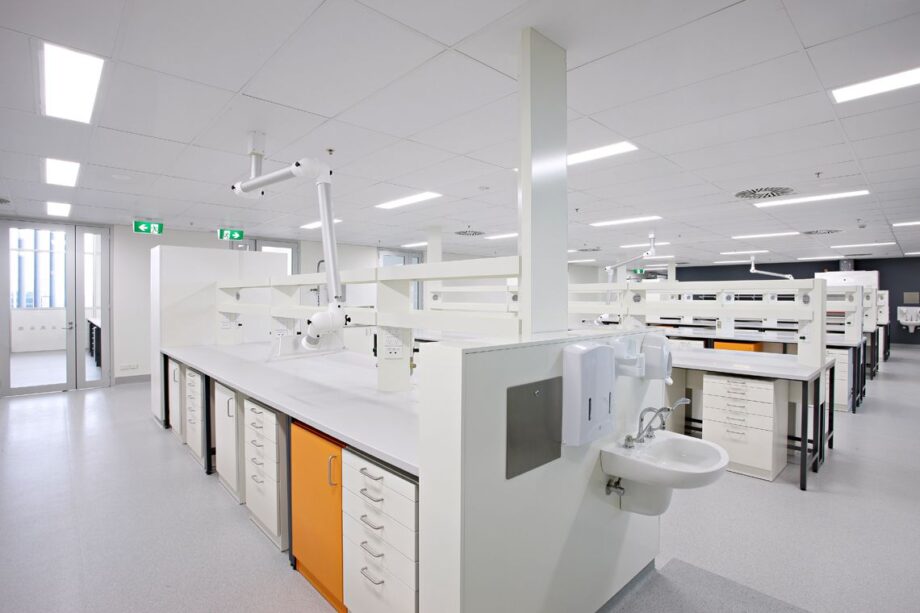Introduction
In the ever-evolving world of scientific research, the design and equipment of laboratories play a pivotal role. Modern laboratories require furniture, fixtures, and equipment that not only enhance efficiency but also ensure safety and accuracy. This article delves into the essential components that make a lab functional, safe, and conducive to scientific innovation.
When setting up a laboratory, the selection and installation of the right Lab Furniture Fixtures and Equipment service is crucial. This service encompasses a range of solutions tailored to meet the specific needs of various scientific disciplines, ensuring that every laboratory is equipped with ergonomically designed furniture, state-of-the-art fixtures, and the latest in lab equipment. By choosing a specialized service, you ensure that your laboratory environment is not only functional but also adheres to the highest standards of safety and efficiency
Essential Laboratory Furniture
- Lab Benches and Workstations: The backbone of any laboratory is its workstations. Ergonomically designed lab benches are crucial. They should offer easy height adjustment and be made of materials resistant to chemicals, heat, and general wear and tear. Modular workstations, which can be reconfigured as needed, are increasingly popular in dynamic research environments.
- Storage Cabinets: Laboratories house a multitude of chemicals and equipment, necessitating robust storage solutions. Cabinets in a lab need to be more than just storage spaces; they should be fire-resistant and designed to contain spills. Specialized cabinets for flammable liquids, corrosives, and other hazardous materials are essential for maintaining a safe laboratory environment.
- Fume Hoods: One of the most critical safety features in any laboratory is the fume hood. These fixtures protect lab personnel from inhaling hazardous vapors by constantly pulling air out of the laboratory. The choice between ducted and ductless fume hoods depends on the type of work being conducted and the chemicals in use.
Key Laboratory Fixtures
- Sinks and Faucets: Labs require sinks that resist corrosion and chemical damage. Faucets with hands-free operation reduce the spread of contaminants and improve hygiene. The placement of sinks is also crucial, with easy access needed for all lab personnel.
- Gas Taps and Safety Showers: Laboratories that use various gases need dedicated gas taps that are clearly labeled and easily accessible. Safety showers and eye wash stations are non-negotiable in any lab dealing with potentially hazardous materials. These fixtures must be regularly tested to ensure they are in good working order.
Essential Laboratory Equipment
- Microscopes and Centrifuges: These are the workhorses of many labs. Today’s microscopes come with advanced features like digital imaging and 3D analysis capabilities. Centrifuges, too, have evolved, with models offering variable speed and temperature settings to accommodate different research needs.
- Analytical Instruments: Instruments such as spectrophotometers, chromatography systems, and PCR machines are essential for detailed analysis in fields like biochemistry, genetics, and pharmacology. Selecting the right instruments depends on the specific needs of the research being conducted.
- Safety Equipment: Personal protective equipment (PPE) like lab coats, gloves, and safety goggles are indispensable. This equipment protects staff from chemical spills, burns, and other lab accidents. PPE should be readily available, properly maintained, and used consistently
LAB designing service focuses on creating spaces that are not only efficient and safe but also conducive to the innovative work carried out by scientists and researchers. Expert team like Westlab Spaces ensure that every aspect of lab design, from furniture to equipment layout, is meticulously planned and executed.
Technological Integration
Modern labs are increasingly integrating technology into their furniture and equipment. Workstations with built-in computer interfaces, adjustable LED lighting, and digital measuring tools are becoming standard. This integration enhances data accuracy, streamlines processes, and supports complex research activities.
Conclusion
Selecting the right furniture, fixtures, and equipment is crucial for any modern laboratory. These choices impact the safety, efficiency, and effectiveness of the research conducted. Lab managers and designers must consider not only the current needs but also the future scalability and adaptability of the laboratory environment.

